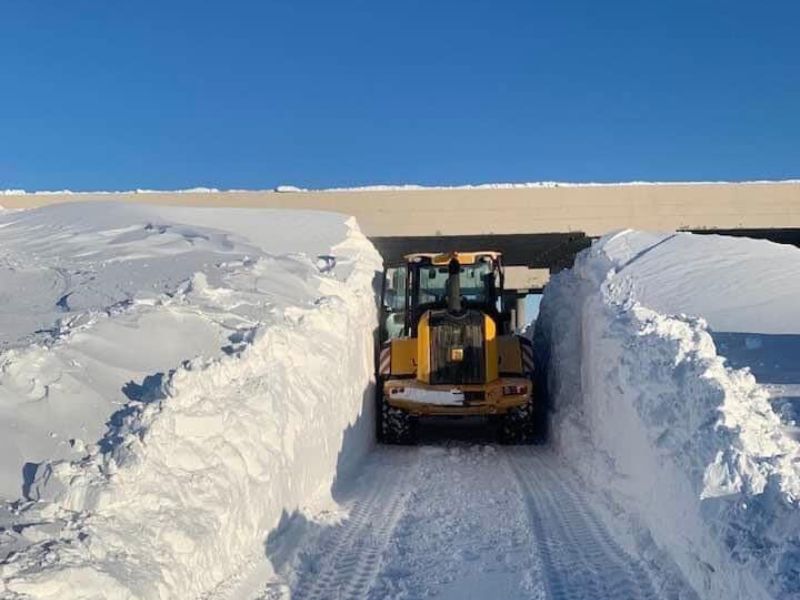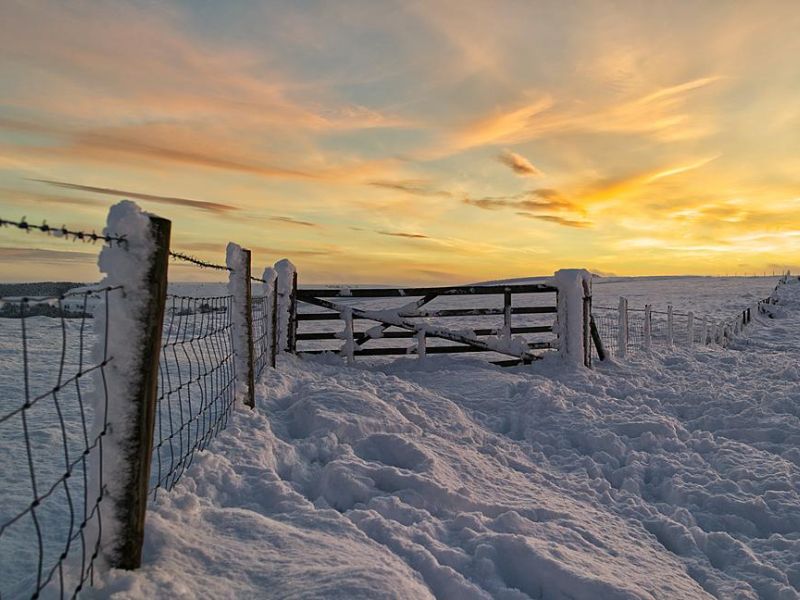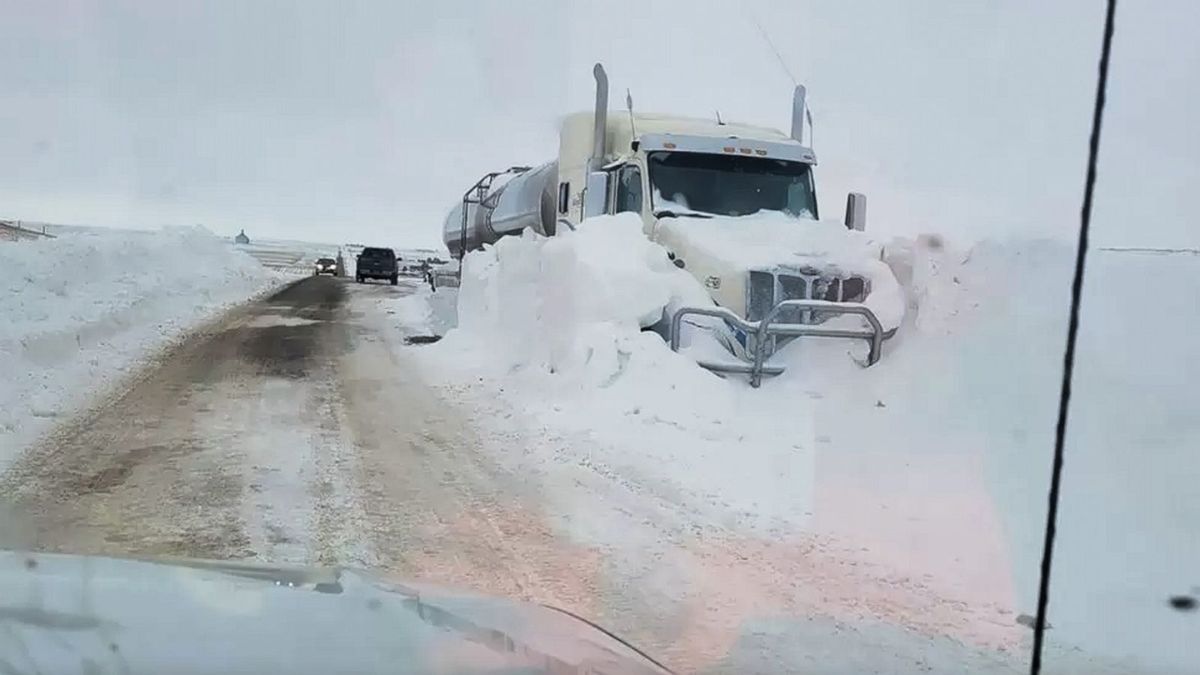Yes, it does snow in South Dakota. South Dakota experiences a significant amount of snowfall during the winter months. The snow season typically extends from November to April, with the snowiest months being December, January, and February.
The eastern part of the state generally receives more snow than the western regions, with cities like Sioux Falls experiencing more snow than Rapid City. The Black Hills region in western South Dakota, in particular, receives ample snowfall, turning it into a winter wonderland and attracting winter sports enthusiasts and tourists alike.
South Dakota, located in the heart of America’s Great Plains, is known for its rugged landscapes, Mount Rushmore, and the iconic Badlands. While it may be famous for its hot summers and rolling prairies, the state also experiences a winter wonderland that brings snow enthusiasts from far and wide.
In this article, we will explore the snowfall patterns in South Dakota, the regions most affected, and the winter activities that make this state a true snow lover’s paradise.
Location Overview of South Dakota
South Dakota, a state located in the Midwestern region of the United States, is often referred to as the “Mount Rushmore State.” Renowned for its rugged natural beauty, vast prairies, and iconic monuments, South Dakota offers a unique blend of history, culture, and outdoor adventures.
South Dakota is situated in the north-central part of the United States, bordered by North Dakota to the north, Minnesota to the northeast, Iowa to the southeast, Nebraska to the south, Wyoming to the west, and Montana to the northwest. The state spans approximately 77,116 square miles, making it the 17th largest state in the country.
South Dakota lies predominantly within the Great Plains, a vast and flat region characterized by grasslands and agricultural lands. The eastern part of the state is particularly fertile, known for its productive farmlands and lush prairies.
In the state’s southwestern corner, you will find the Black Hills, a small mountain range and an anomaly within the Great Plains. This region is renowned for its scenic beauty, including granite peaks, canyons, and dense forests. Mount Rushmore, the famous sculpture of four U.S. presidents, is nestled within the Black Hills near the city of Keystone.
South Dakota’s geographical location places it at the heart of America’s Great Plains. The state’s mix of natural beauty, historical significance, and diverse urban centers make it a compelling destination for both residents and visitors, offering a rich tapestry of experiences to explore and enjoy.
Whether you are seeking stunning landscapes, cultural immersion, or outdoor adventures, South Dakota has something special to offer within its expansive borders.
Geography and Climate of South Dakota
Geographically, South Dakota’s snowfall is influenced by its continental climate and diverse topography. The state’s location in the northern part of the United States exposes it to cold air masses, resulting in cold winters conducive to snowfall.

The eastern region, closer to the moisture-rich Gulf of Mexico, tends to receive more snow compared to the western areas. The Black Hills, a small mountain range in the southwest, significantly enhances snowfall in that region, creating a winter wonderland.
South Dakota’s climate is characterized by its continental nature, with distinct seasonal variations. Summers are warm, and temperatures can soar above 90 Fahrenheit, but winters are cold and can dip well below freezing.
The snow season in South Dakota typically extends from November to April, making it one of the states in the northern U.S. that experiences a significant amount of snowfall.
Historical Snowfall Record of South Dakota
South Dakota has a long history of experiencing snowfall, especially during winter. Snowfall records in the state vary significantly based on location and year. The eastern part of the state tends to receive more snow due to its proximity to the Gulf of Mexico, which brings in moisture.
Throughout history, South Dakota has experienced severe winter storms and blizzards that have impacted communities and transportation. Some of the most significant ones include:
- Blizzard of 1888
Also known as the “Great Blizzard” or the “Schoolhouse Blizzard,” this devastating snowstorm struck the state and other parts of the United States on January 12-13, 1888. It brought heavy snowfall, hurricane-force winds, and bitter cold temperatures.
The blizzard caught many people by surprise, especially schoolchildren who were trapped in one-room schoolhouses, resulting in tragic losses of life.
- Blizzard of 1949
Occurring in late January and early February 1949, this severe blizzard affected South Dakota and other states in the region. It brought heavy snow and strong winds, paralyzing transportation and causing livestock losses and crop damage.
- Easter Blizzard of 1997
This late-season blizzard struck during the Easter weekend of March 28-31, 1997. It brought widespread heavy snowfall, blustery winds, and sub-zero temperatures. The storm caused extensive power outages, disrupted travel, and created hazardous conditions across the state.
- Groundhog Day Blizzard of 2011
In early February 2011, South Dakota experienced a severe winter storm known as the “Groundhog Day Blizzard.” The storm brought heavy snowfall, high winds, and whiteout conditions, impacting travel and daily activities for several days.
- April 2018 Blizzard
In April 2018, a powerful spring blizzard hit South Dakota, bringing heavy snowfall and strong winds. The storm disrupted travel, closed roads, and led to hazardous conditions for several days.
Winter Season & Snowfall Pattern of South Dakota
South Dakota’s snowfall patterns vary across the state due to its diverse topography. The eastern part of the state, which is more influenced by the moist air from the Gulf of Mexico, tends to receive more snowfall than the western regions.
Cities such as Sioux Falls and Aberdeen generally experience more snow than Rapid City, which is located in the western part of the state. The Black Hills region in western South Dakota is one of the state’s most enchanting destinations during winter.
This mountainous area is blessed with ample snowfall, creating a picturesque winter wonderland. Places like Deadwood, Hill City, and Lead turn into idyllic snow-covered towns, perfect for cozy getaways and winter activities.
The snowiest months in South Dakota are usually December, January, and February. During these months, temperatures are consistently cold, and storms from the North and West can bring heavy snowfall to the region.
However, even in November and March, snow is not uncommon, providing an extended winter season for outdoor enthusiasts.
Locations to Enjoy Snow in South Dakota
South Dakota offers several enchanting locations to enjoy snow and embrace the winter wonderland. Here are some of the best places to experience the magic of snow in the state:

- The Black Hills
This mountainous region in western South Dakota is a snow lover’s paradise. The Black Hills receive abundant snowfall during the winter months, making it perfect for skiing, snowboarding and snowshoeing. Additionally, the picturesque landscapes and frozen waterfalls make it an ideal destination for winter photography and sightseeing.
- Terry Peak Ski Area
Located in the Black Hills, Terry Peak is one of the premier skiing destinations in South Dakota. With a variety of slopes catering to all skill levels, it offers a fantastic opportunity for skiing and snowboarding enthusiasts.
- Custer State Park
While Custer State Park is famous for its wildlife and natural beauty, it transforms into a winter wonderland during the snowy season. The park’s trails are excellent for winter hiking and snowshoeing, allowing visitors to explore its serene beauty in a different light.
- Sylvan Lake
Nestled in the Black Hills, Sylvan Lake is a stunning location that freezes over during winter, creating a breathtaking ice-covered landscape. Visitors can enjoy ice skating, ice fishing, and even winter picnics by the frozen shores.
- Spearfish Canyon
Another gem in the Black Hills, Spearfish Canyon turns into a scenic wonderland with frozen waterfalls and snow-laden pine trees. The canyon offers opportunities for winter hikes, snowshoeing, and cross-country skiing.
- Deadwood
This historic town in the Black Hills not only offers a glimpse into the Wild West but also becomes a charming winter destination with snow-covered streets and festive decorations. It’s an ideal spot for cozy getaways and enjoying the winter ambiance.
- Sioux Falls Parks
The city of Sioux Falls boasts several beautiful parks that transform into winter havens. Falls Park, in particular, becomes a magical sight when its waterfalls freeze over, creating an enchanting scene for visitors.
- Snowmobiling Trails
Throughout South Dakota, you can find numerous snowmobiling trails that traverse the state’s scenic landscapes. Whether in the Black Hills or the open prairies, snowmobiling enthusiasts have plenty of opportunities to rev up their engines and explore the snowy terrain.
Factors Influencing Snowfall in South Dakota
Several factors influence snowfall patterns in South Dakota. The state’s geographical location in the northern part of the United States exposes it to cold air masses during the winter months, creating the ideal conditions for snow formation.
South Dakota’s continental climate, characterized by significant temperature fluctuations between seasons, contributes to cold winters, further promoting snowfall. Additionally, the state’s diverse topography plays a role in snowfall variations.
The eastern region, closer to the Gulf of Mexico, receives more moisture, leading to increased snowfall compared to the drier western areas. The presence of the Black Hills in the southwest significantly enhances snowfall in that region as the mountainous terrain influences local weather patterns.
Moreover, weather systems originating from the North and West can bring heavy snowfall to the state, particularly impacting the eastern and Black Hills regions. These geographical, climatic, and topographical factors collectively shape the snowfall experienced across South Dakota during the winter season.
Conclusion
South Dakota experiences significant snowfall during the winter months, transforming its landscapes into a picturesque winter wonderland. The Black Hills region and eastern parts of the state are particularly affected, providing ample opportunities for winter activities and creating a magical atmosphere for both residents and visitors.
Whether you are a snow sports enthusiast or simply want to revel in the charm of a snowy landscape, South Dakota’s winters have something special to offer. So, if you ever find yourself in this beautiful state during the snowy season, don’t forget to embrace the magic of winter in South Dakota.
